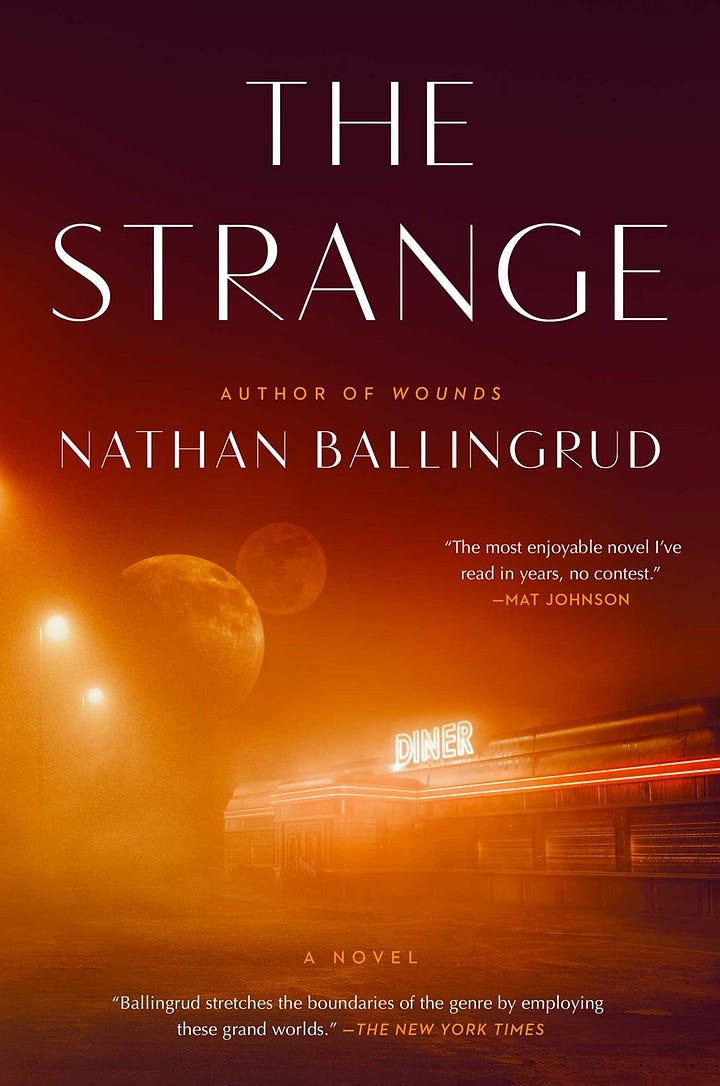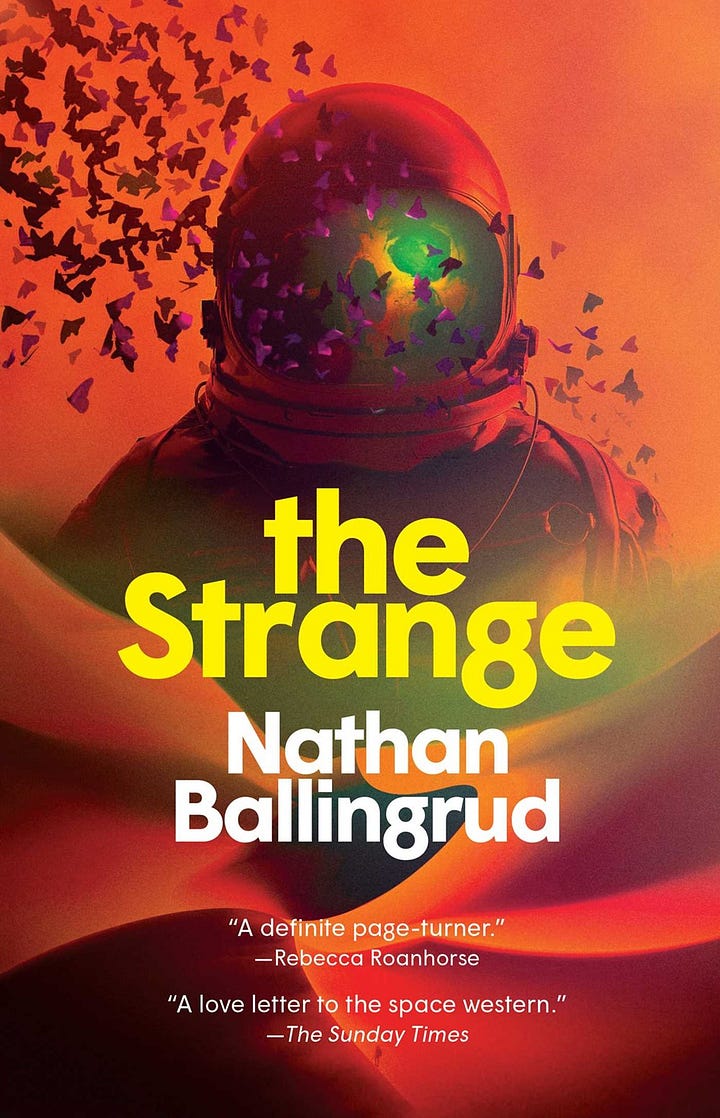Behind the book: Forging your own genre hybrid
"Mars has always been as much a fantasy setting as Middle-earth or Narnia." How Nathan Ballingrud created THE STRANGE.
Last year, as soon as I finished reading Nathan Ballingrud’s debut novel, The Strange, I knew it had become my all-time favorite Mars novel, ahead of Ray Bradbury’s The Martian Chronicles, Kim Stanley Robinson’s Red Mars, and Dan Simmons’ Ilium.
But even more than those older novels, The Strange is a genre hybrid between fantasy, science fiction, horror, western, historical fiction, alternate history, and planetary romance. I genuinely don’t know where I would shelve it as a bookseller — and I think that’s one of its greatest strengths, alongside classics like Gene Wolfe’s The Book of the New Sun.
The Strange is set in the town of New Galveston in 1931, when Anabelle Crisp, the teenage daughter of a diner-owner, ventures out into the Martian frontier to retrieve the last recordings of her late mother, and discovers haunting truths about humankind’s history on the red planet.
I spoke with Nathan Ballingrud — also known for his short fiction collected in North American Lake Monsters and Wounds (recently re-pubbed in a gorgeous special edition called The Atlas of Hell) — about writing The Strange.
When and how did The Strange begin for you?
It began a few years ago, when I was playing around with the idea of making a podcast modeled after old fashioned radio serials. I had the idea of the show centering around a small, rural community on Mars in the 1930s. I was thinking of something like a cross between Garrison Keillor’s Lake Wobegon and Sherwood Anderson’s Winesburg, Ohio. (I still really like this idea.)
Some of the characters from that early form are in the novel — Sheriff Bakersfield, Jeremiah Shank, Widow Kessler — but once Anabelle came onto the scene, her story took over. I decided it had to be a novel.
I set it on Mars because, for me, Mars has always been as much a fantasy setting as Middle-earth or Narnia. Ever since I was a little kid, staring at that little pink star, it’s been a place for dreams to run free. That’s why there is no believable science in the book. Despite what they’re calling it, it isn’t science fiction. It’s fantasy. It’s a planetary romance.
Why set this in 1931 instead of the future, like most novels set on Mars?
The story was set in the past as soon as I conceived it. It wasn’t a decision; it was just there. I’m sure it had something to do with a number of factors: the influence of Ray Bradbury and Charles Portis, the fact that I had just read a book called The Worst Hard Time by Timothy Egan, which made me think of sandstorms on Mars.
How did you approach writing a novel differently than your short stories?
I let myself breathe. I allowed myself to spend time with characters, get to know them by their conversations with other characters, let them reveal themselves to me in stages.
Short stories are so much about focus and concision. While those elements are important in a novel too, there is room for digression, there is time to sit by a fire and just talk. Spending time with characters who bump against each other and even themselves is my favorite thing to do as a writer, and I got to do that with three of them in this novel. I really enjoyed that. So to answer your question more succinctly, I relaxed. I let the characters go.
What was the most difficult thing about writing The Strange?
Plot. By a long shot. I tried teaching myself to work with plot with some of the stories I’d written before jumping into the novel, but it was still a challenge. Getting all the elements to cohere and come to a satisfying conclusion without getting in the way of the emotional payoff of Anabelle’s internal arc, which is for me far more important, was a challenge. I’m not sure I lived up to it. I hope I came close.


Do you have any routines or rituals that help you get in the right mindset to write horror? Especially when it’s set somewhere so different from your daily life?
I don’t, really. I prefer silence when I write. That lets me get to where ever I need to go. I avoid reading or watching anything remotely similar once the actual writing begins, for fear of it pulling me off course. If I need inspiration, I’ll look at art. For The Strange I looked at art depicting desert landscapes and scenes from the Old West, as well as pulp art about Mars. Other than that, I just try to find some quiet, some isolation, and let my imagination take over.
Do you plot out your stories and novels before you start writing them, or do you begin with a premise and see where the writing takes you?
As much as I can, I try to avoid plotting too much. I really enjoy wandering through the jungle, stumbling on things I hadn’t expected. With a short story, I like to have the end in mind; not firmly, but a rough sense. A distant light to guide me through the forest. With the novel, I found I needed a rough map. Certain key way stations before the end. But I allowed myself to wander and get lost in between them. I’m a slow writer and I’d probably be a lot faster if I outlined more thoroughly, but I think I’d lose a lot of joy in the process. Getting lost in the dark wood is too rewarding.
Forthcoming in The Frontlist
April book preview
Behind the book with Crystal Hana Kim (The Stone Home) and Caroline Crampton (A Body Made of Glass)




